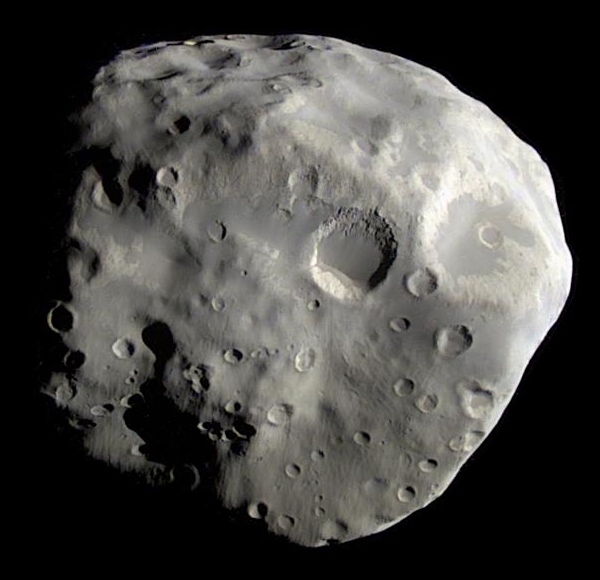File:PIA09813 Epimetheus S. polar region.jpg
Appearance
PIA09813_Epimetheus_S._polar_region.jpg (600 × 580 pixels, file size: 153 KB, MIME type: image/jpeg)
Seenaa faayilaa
Faayilicha sa'aa san akka itti mul'atetti ilaaluuf guyyaa/yeroo cuqaasi.
| Guyyaa/Sa'aa | Qeensa abgudduu | Kallattiiwwan | Fayyadamaa | Yaada | |
|---|---|---|---|---|---|
| amma | 22:49, 5 Amajjii 2013 |  | 600 × 580 (153 KB) | Antonsusi | Turn back ok, but the margin makes only a smaller, not optimised visible size of the object on pages. |
| 07:59, 19 Muddee 2012 |  | 680 × 640 (222 KB) | WolfmanSF | Reverted to version as of 17:18, 11 January 2008 - Solar System objects are normally portrayed with north up, which means solar illumination comes from the side; also, there's no artistic advantage to eliminating the margin | |
| 02:39, 9 Amajjii 2011 |  | 580 × 600 (146 KB) | Antonsusi | cropped, turned upright | |
| 17:18, 11 Amajjii 2008 |  | 680 × 640 (222 KB) | WolfmanSF | replace with processed NASA image |
Fayyadamiinsa faayilaa
Kutaan itti anuu "file"ii kanan walitti qabatta:
Fayyadamiinsa faayila guutu addunyaa
Wikileen biroo kan armaan gadi jiran fayila kana fayyadamu:
- Fayyadamiinsa af.wikipedia.org irratti
- Fayyadamiinsa als.wikipedia.org irratti
- Fayyadamiinsa ar.wikipedia.org irratti
- Fayyadamiinsa ary.wikipedia.org irratti
- Fayyadamiinsa arz.wikipedia.org irratti
- Fayyadamiinsa ast.wikipedia.org irratti
- Fayyadamiinsa as.wikipedia.org irratti
- Fayyadamiinsa be.wikipedia.org irratti
- Fayyadamiinsa bh.wikipedia.org irratti
- Fayyadamiinsa bs.wikipedia.org irratti
- Fayyadamiinsa ca.wikipedia.org irratti
- Fayyadamiinsa ckb.wikipedia.org irratti
- Fayyadamiinsa de.wikipedia.org irratti
- Fayyadamiinsa el.wikipedia.org irratti
- Fayyadamiinsa en.wikipedia.org irratti
- Cassini–Huygens
- Epimetheus (moon)
- Wikipedia:Selected anniversaries/December 18
- Timeline of discovery of Solar System planets and their moons
- Moons of Saturn
- List of Solar System objects by size
- Naming of moons
- List of natural satellites
- User:Dabomb87/Sandbox
- Discovery and exploration of the Solar System
- User:Fotaun
Mul'isa fayyadama duniyaalessa edaasaa harshama kanaa.



